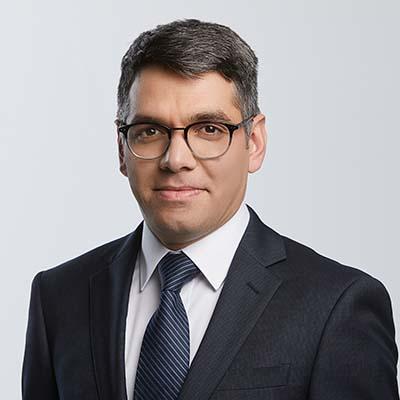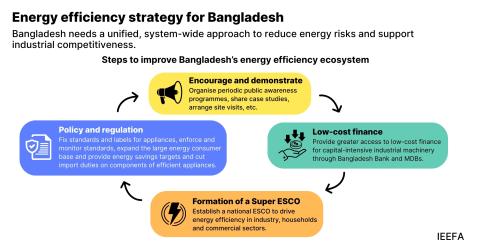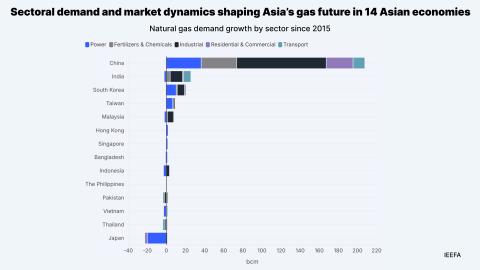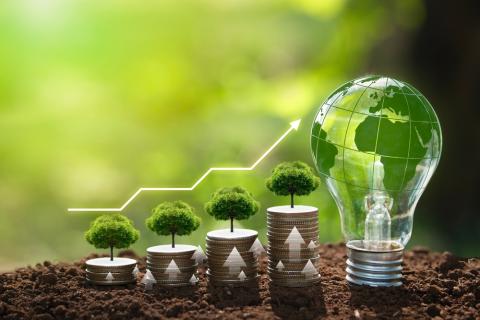Oman sets pace in green steel race

Ambitious strategy seeks to capitalise on existing advantages
Key Takeaways:
Oman is becoming a global hub for green iron and steel, due to its strong renewable energy potential, hydrogen projects, available land, strategic coastal location, and supportive regulations.
New direct reduced iron (DRI) plants in Oman are being designed to use hydrogen from the start, setting a benchmark for the green iron transition.
Oman already has a strong steelmaking supply chain – from iron ore to electric arc furnaces – and this integrated setup is expanding to support green steel production.
12 November 2025 (IEEFA): Oman is well placed to become a global leader in the emerging green iron and steel industry, building on its existing natural advantages and strong industrial foundations through shrewd strategic planning.
A new report from the Institute for Energy Economics and Financial Analysis (IEEFA) evaluates the industrial landscape in Oman as the decarbonisation of iron and steelmaking gathers pace. The country is making a strong claim to capitalise on the transition and establish itself as a leading international hub, according to Soroush Basirat, Energy Finance Analyst, Global Steel at IEEFA and author of the report Oman at the frontline of the green steel transition.
“Oman is one of the few nations in the Middle East and North Africa (MENA) region with an integrated steelmaking supply chain,” says Basirat. “Having this established industrial base gives it a solid foundation for transitioning towards low-emission iron and steel production – and ultimately green iron and steel.”
Oman’s iron and steel supply chain includes iron ore concentration, pelletising, direct reduction and electric arc furnace (EAF) facilities, with expansion plans that include domestic iron ore concentration. In particular this industrial base is well set up for the shift to low-emission iron and steelmaking, as it is well advanced in producing iron metallics such as direct reduced iron (DRI), which can be produced using fossil gas, or eventually with green hydrogen.
Gas-based DRI is emissions-intensive, and it is not possible to produce green iron and steel with gas. Without transitioning from gas to green hydrogen, new DRI projects will be unable to benefit from a green premium in the market. To achieve that, the country needs to move from gas to green hydrogen.
However, Oman also enjoys vast renewable energy potential, significant investments in both solar and wind power generation. Cheap, reliable clean energy could be a major advantage for steelmakers in Oman, providing the constant power needed for EAFs, DRI, and, importantly, the electrolysers needed to produce green hydrogen.
The country has a clear, coordinated strategy to become a leading hub for green hydrogen production. It aims to produce 1-1.5 million tonnes of green hydrogen by the end of this decade. The steel sector can play a central role as a major offtaker in Oman’s emerging green hydrogen economy.
To support these ambitions, Oman also boasts abundant land for project development. Moreover its strategic location, with access to open seas, gives it an advantage in supplying major export markets such as the EU, Asia and Southeast Asia.
Oman’s existing advantages are further enhanced by strong policy support and a supportive regulatory framework. The country’s Oman Vision 2040 nationalises development strategy sets an overall target of achieving a non-oil share of GDP of over 90%, moving the country away from its reliance on fossil fuel exports. Its hydrogen strategy includes comprehensive planning across all aspects, from developing infrastructure and providing incentives, to actively supporting the securing of offtakers for hydrogen projects.
Oman’s iron and steel sector has traditionally been dominated by two companies, Jindal Group and Vale. However, the country is now attracting new entrants such as Meranti Green Steel, Mitsui and Kobe Steel, and even green hydrogen developer and energy company, ACME Group, which are reshaping the market. They are spearheading a new generation of DRI facilities featuring flexible technologies in the country. Crucially, these projects are expected to use a mix of gas and hydrogen from day one with ambitious timelines for increasing the amount of hydrogen used.
“Oman stands at a pivotal moment,” says Basirat. “With the potential to supply green iron to markets such as the EU cost-competitively, the country holds a significant advantage over other producers. And it is well positioned to lead the shift to green iron and steel as it is managing the transition in a highly structured way.”
Read the note: Oman at the frontline of the green steel transition
Media contact: Amy Leiper, ph +61 414 643 446, [email protected]
Author contact: Soroush Basirat, [email protected]
About IEEFA: The Institute for Energy Economics and Financial Analysis (IEEFA) examines issues related to energy markets, trends, and policies. The Institute’s mission is to accelerate the transition to a diverse, sustainable and profitable energy economy. (ieefa.org)











